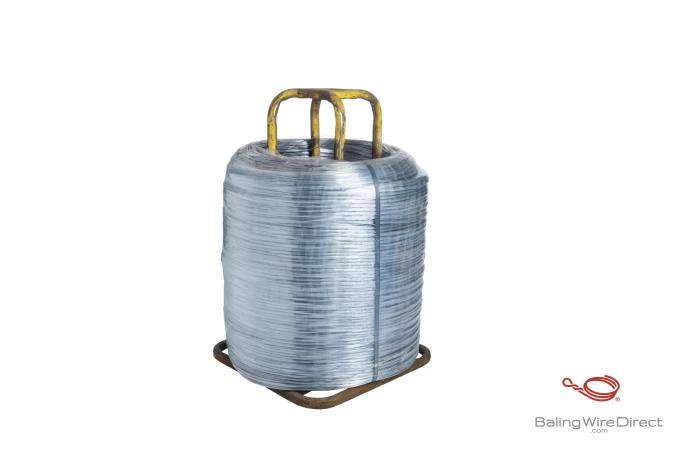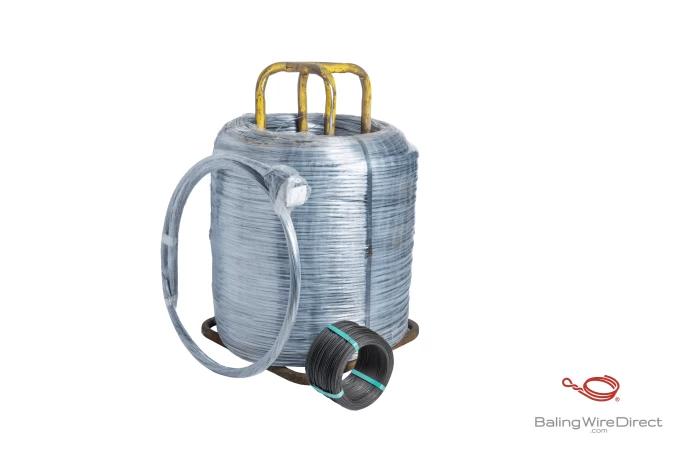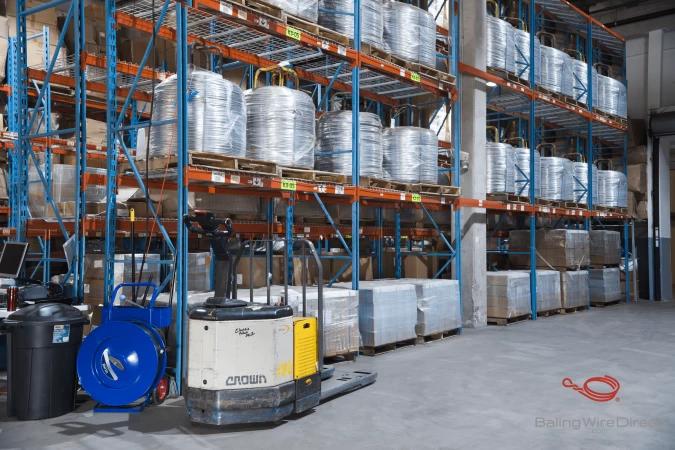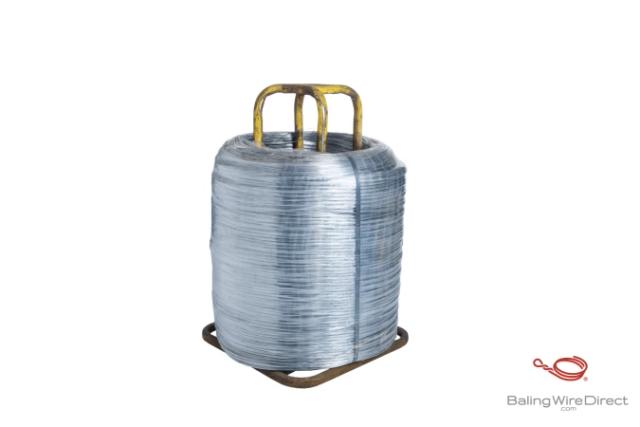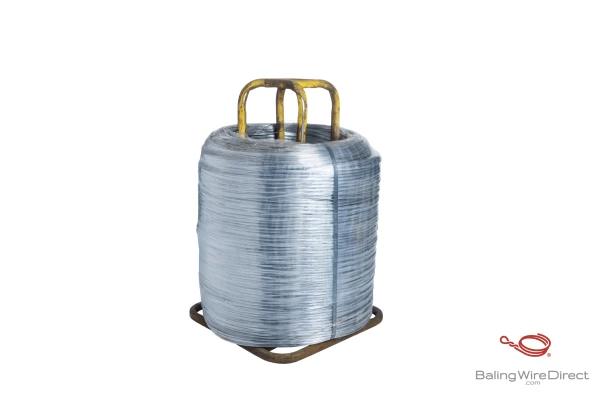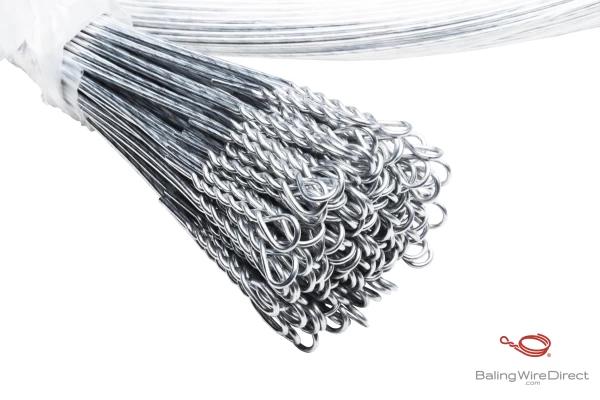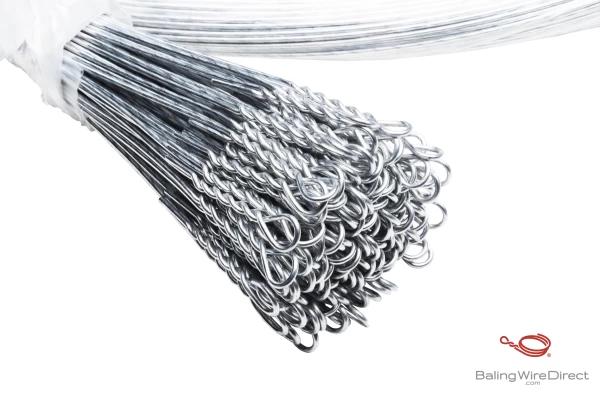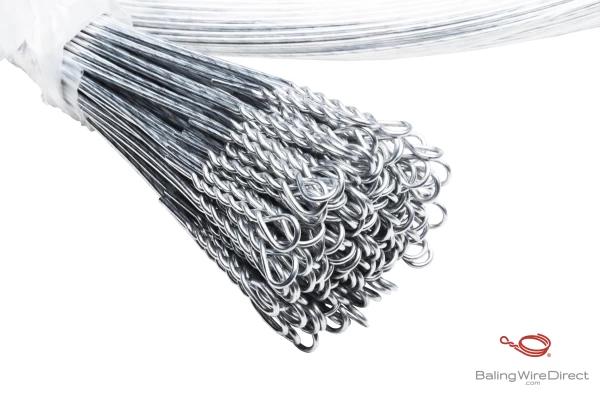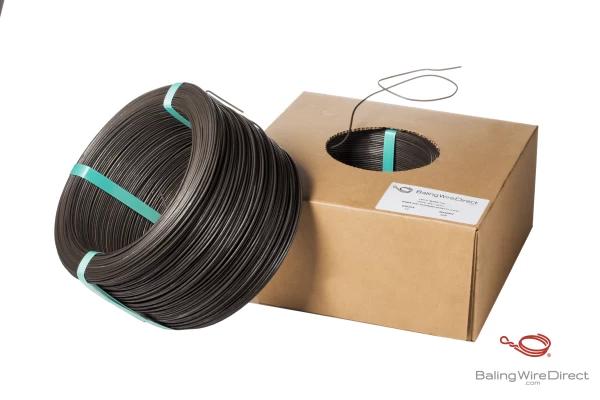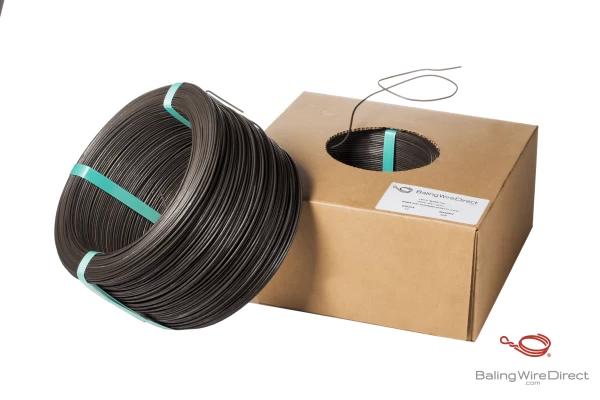11 Gauge Hi-Tensile Galvanized Carrier Wire
$2,297.34$2,527.07
| Wire gauge |
11 Gauge |
| Load strength | 1,640 – 1,832 lbs. |
| Tensile strength | 145,000 – 175,000 psi (999.74 – 1206.58 MPa) |
| Diameter (inch) | Actual Size (.119" - .121" / 3.0226 mm - 3.0734 mm) |
Add to cart to calculate freight
Wire specifications
Our 11 gauge hi-tensile stem wire is suited for the toughest jobs. American-made galvanized baler wire binds tight and holds strong. Sold by the stem.
| Wire gauge | 11 Gauge |
| Load strength | 1,640 – 1,832 lbs. |
| Tensile strength | 145,000 – 175,000 psi (999.74 – 1206.58 MPa) |
| Diameter (inch/mm) | Standard Wire Gauge or SWG (.116" / 2.946 mm) | Actual Size (.119" - .121" / 3.0226 mm - 3.0734 mm) |
| Elongation | 7 - 11% |
| Carbon grade | 1065 |
| Stem size | 1,600 lbs. (Approx.) |
| Feet per stem | 41,312 feet (Approx.) |
| Quality control | Extensive testing on every carrier |
| Finish | Hot-dip galvanized with molten zinc followed by a protective coating of wax |
Industry uses
A perfect selection for heavy-duty jobs. Our galvanized hi-tensile wire is commonly used as baling wire, fencing wire, vineyard wire, and more. A wide range of industries use our wire, including the following:
100% USA-made wire
We manufacture our galvanized baling wire to the highest industry standards. Every step in our manufacturing process adheres to rigorous protocols. We start by purchasing 100% American-produced steel billets from select family-owned facilities.
From there, the process continues at our state-of-the-art factory. Our skilled team of over 120 production staff members and 5 on-site engineering experts gets to work transforming raw materials into exceptional baling wire products.
First, to clean the carbon steel wire rods, we implement a mechanical reverse-bending technique that reduces die wear and eliminates mill scale and surface rust. We steer clear of acid bath descaling methods and eliminate harsh, environmentally unsafe chemicals from our production processes.
Next, in order to maximize strength and durability, the clean baling wire is drawn through a heavy-duty bull-block continuous wire drawing machine. It is then air-cooled to promote a homogeneous crystalline structure and ensure consistent tensile strength.
Lastly, through our hot-dip galvanizing process, the carrier wire is submerged and coated to apply a protective zinc barrier that prevents corrosion for maximum longevity.
Our galvanizing process
We hot-dip galvanize our stem wire in zinc to resist rust and abrasion. The zinc coating forms a protective oxide layer that acts as an extremely durable shield when exposed to the atmosphere.
The 7 steps in our galvanizing process are:
- Surface preparation: we clean the baler wire with alkaline solutions to remove any impurities from the surface of the metal. Clean baling wire ensures proper adhesion of the zinc coating.
- Pickling: the wire is then submerged in a bath of hydrochloric acid to dissolve any remaining oxides and scale. This creates a clean substrate for the galvanizing process.
- Fluxing: next, the wire is immersed in a flux solution (zinc ammonium chloride), which helps to prevent oxidation and ensures a uniform application of the zinc coating.
- Galvanizing bath: the wire is then dipped into a bath of molten zinc at a temperature of around 450°C (850°F).
- Alloy formation: a metallurgical reaction occurs between the iron in the wire and the zinc, creating a series of zinc-iron alloy layers. These provide excellent adhesion properties and resistance to corrosion.
- Withdrawal: adjustable rollers slowly extract the carrier wire from the zinc bath to regulate coating consistency by allowing excess fluids to drain.
- Quenching. Next, the zinc-coated wire is rapidly cooled with water or a quenching solution that solidifies the zinc coating and completes the galvanizing process.
The galvanization cycle creates durable zinc shielding to protect against rust and abrasion. Finally, an additional microcrystalline wax sealant further protects our wire products, ensuring no messy residue and ease of use in two-ram horizontal balers.
Galvanization Classes we offer
We offer both Class 1 and Class 3 galvanization. While Class 1 is more economical, Class 3 provides enhanced protection thanks to a thicker zinc coating:
- Class 1 galvanization is the most basic type of coating, typically used on barbed wire and field fences. The wire is galvanized by adding a thin, protective layer of zinc. It’s cheap and efficient, but not as effective in the long term. Class 1 galvanized wire fences start to rust quickly. They typically last a maximum of 11 years and in some cases as little as 2. In a coastal area with heavy concentrations of salt water in the air, the zinc coating can deteriorate at an even faster rate.
- Class 3 galvanization provides a stronger, longer-lasting zinc coating. Whereas Class 1 galvanization applies 0.28 ounces of zinc per square foot, Class 3 applies a thicker coating of 0.80 ounces per square foot. It costs slightly more than Class 1, but it will last anywhere from 13 to 30 years before it needs to be replaced, making it well worth the investment.
Our quality commitment
Baling Wire Direct exceeds quality and performance standards. We control every step of production and distribution to deliver exceptional baling wire products to our clients at the lowest price.
Our manufacturing process adheres to strict protocols, allowing us to produce commercial-grade, high-carbon steel baling wire suited for the recycling and waste management industry and beyond.
Our Autoship™ system provides real-time tracking information and updates through email or text message. The automated inventory management and reordering system delivers baler wire supplies before you run out.
This set-and-forget system makes baling wire replenishment easy and stress-free. Receive your product in as little as 1-3 business days.
What is the hi-tensile wire used for?
High-tensile galvanized baling wire is commonly used in a variety of applications due to its remarkable strength, durability, and resistance to corrosion. Here are some of the most common uses:
- Baling recyclables: High-tensile wire is often used in the baling of heavy large recyclables such as cardboard, polythene, film, paper, and plastics.
- Bundling packages. Known as carrier wire, stump wire, or stand wire, high-tensile galvanized wire is used to bundle packages and prepare them for shipping, storage, or sale.
- Construction. High-tensile wire provides excellent reinforcement and support in large projects such as bridge construction where sustainability is essential.
- Manufacturing. Due to its considerable strength, high-tensile wire is suitable for making springs, sprockets, and studs that can handle excessive force.
The bottom line; superior strength and corrosion resistance make our high-tensile baler wire an excellent choice for a wide variety of applications.
Galvanized wire sizes
We sell galvanized high-tensile wire in 11 and 12-gauge. Wire gauge is an inverse indicator of diameter. Higher gauges indicate thinner wires, while lower gauges indicate thicker wires.
During the drawing process, rod stock is pulled through progressively narrower dies to stretch metals, elongating and thinning wires. When a wire is subjected to more drawing cycles, it passes through more gauges to become thinner. Therefore, a higher gauge designation corresponds with a thinner wire.
Here’s a handy reference of gauge size and equivalent diameter.
|
Wire gauge |
Diameter in inches |
|
11 |
Standard Wire Gauge SWG (.116") / Actual with tolerance (.119" - .121") |
|
12 |
Standard Wire Gauge SWG (.104") / Actual with tolerance (.104" - .106" ) |
You might be interested in
Baling Wire Direct offers the following types of high-quality wire products.
